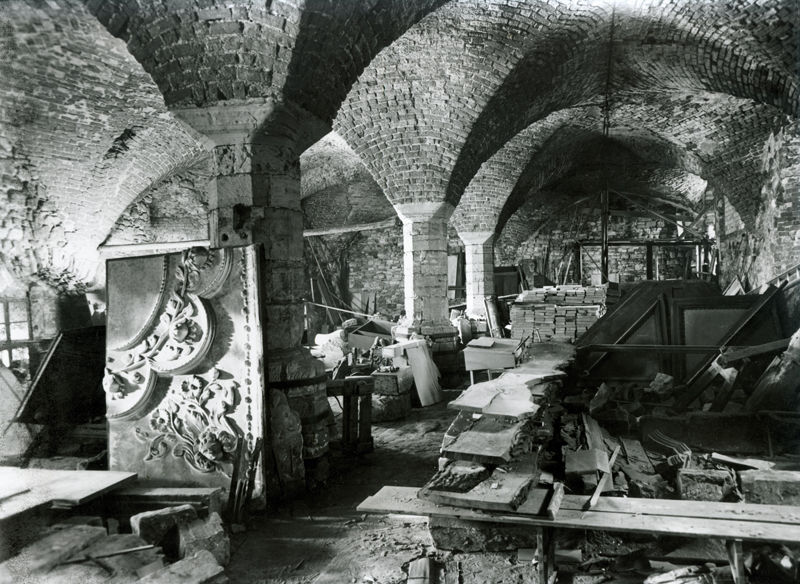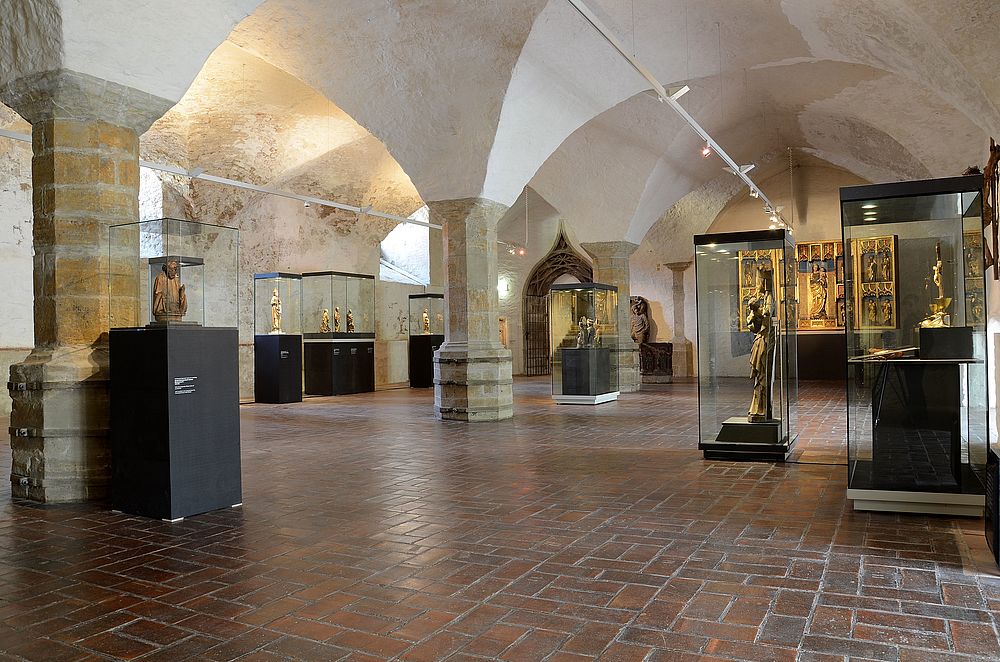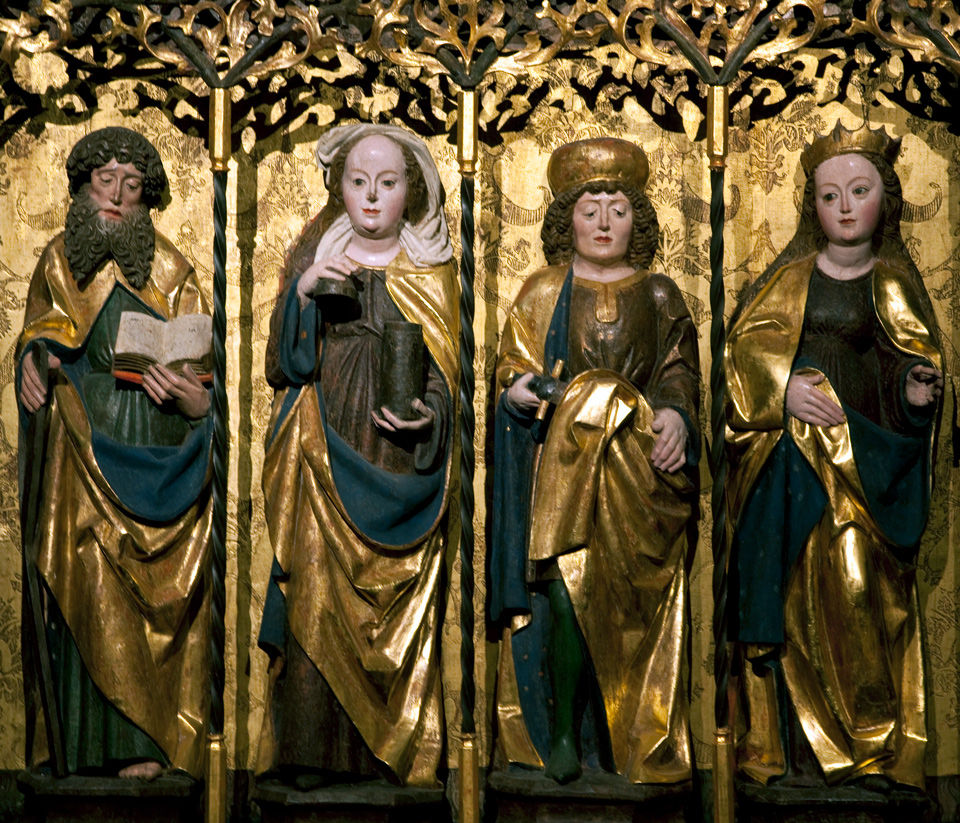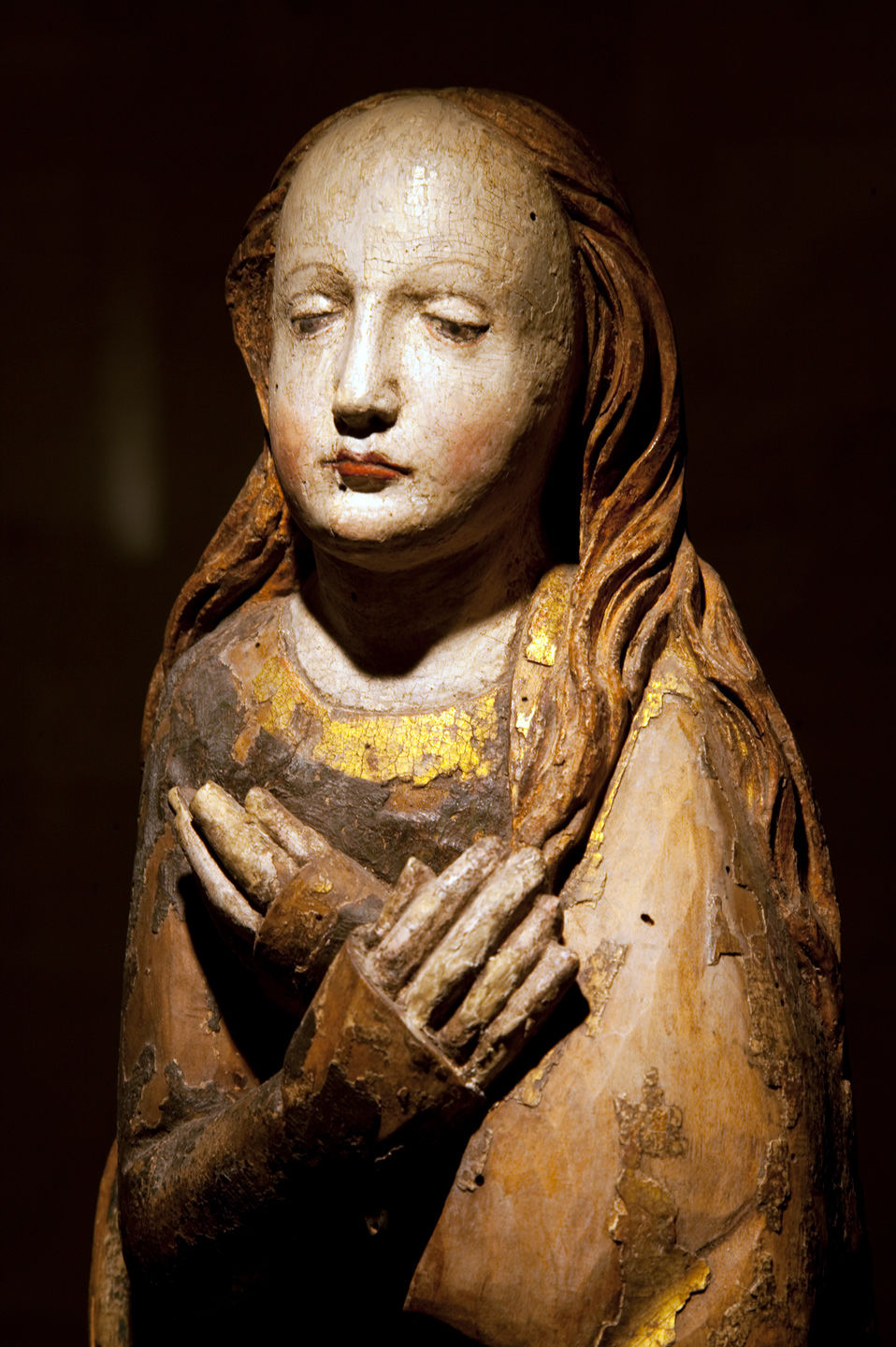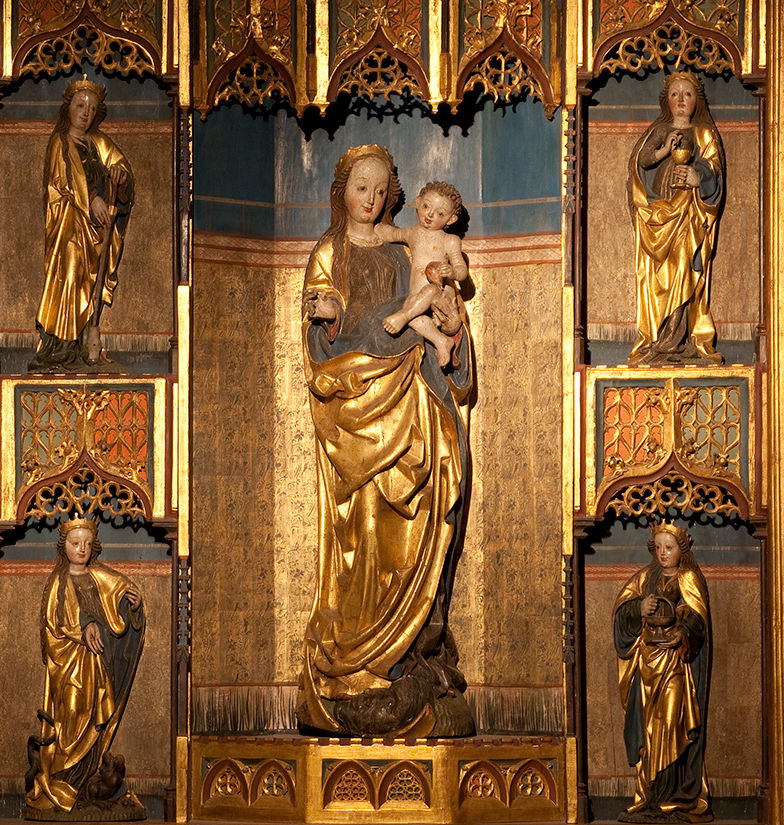Sacral art from the Middle Ages to the Baroque era
in the Gothic Vault
Since 1952, the Gothic Vault has been used to present old masters and applied arts. Originally without a dividing wall, it covers the south half of the first basement level in the west wing of Moritzburg Castle. This once held the Hofstube, the dining and living area for the garrison stationed at the royal seat. In around 1900, a “memorial cellar” was set up here, holding a collection of architectural elements and sculptures from buildings in Halle which had been torn down or converted. In the early 1950s, the vault was divided by a wall. At the same time, the richly ornamented Renaissance portal (c. 1525) from Halle Cathedral was built in, along with other portals.
The first room of the permanent old masters exhibition presents sculptures from historical Halle buildings. Two significant pieces are coloured sculptures from the market-fronting façade of the Late Gothic town hall, torn down in 1946. Saint Helena (1502) is an early work by the famous unidentified artist “Meister H. W.”. The figure of Saint Maurice (c. 1500), the patron saint of the Archdiocese of Magdeburg, once adorned the south-west corner of the town hall and is thought to be from a Magdeburg atelier.
An “Agony in the Garden” painting from the Church of St. Ulrich (rebuilt in 1531) shows three sleeping disciples in the Garden of Gethsemane. Figures and reliefs came to the museum from the two inscribed tombstones for Henning Hammel (1602) and Laurentius Hoffmann (1630), damaged as they were taken down in the new Church of St. Ulrich in 1885. The elaborately restored alabaster works are some of the most important pieces of early Central German Baroque.
In the second room there is a selection of mediaeval altars and individual sculptures, mainly from Central Germany, and handicrafts from a religious context. The fully preserved altars from Kämmeritz and Rothenschirmbach are a magnificent sight.

